Ten years ago, great jubilation arose among the Star Wars faithful when Disney acquired Lucasfilm and subsequently announced Star Wars sequels featuring the original trilogy characters. Finally, we could move past the sins of the prequel trilogy — Episodes I, II, and III, all written and directed by George Lucas — with “real” Star Wars movies that would eclipse our blighted memories of Lucas’ miscalculations. Sure enough, when The Force Awakens debuted in 2015, fans and casual viewers alike proclaimed its fidelity to the holy trinity of original Star Wars movies. It might be a little derivative, but doggone it, it looked like original Star Wars. More importantly, it felt like original Star Wars.
It didn’t take long for folks to change their tune. Now the sequels — The Force Awakens, The Last Jedi, and The Rise of Skywalker — are much maligned for their lack of cohesive vision and their reliance on tired material. Meanwhile, the prequels have undergone fresh appraisal, and the excitement among fans is off the charts for prequel-related shows like Obi-Wan Kenobi. After suffering two decades of derision, are the prequels suddenly considered good now? How did that happen?
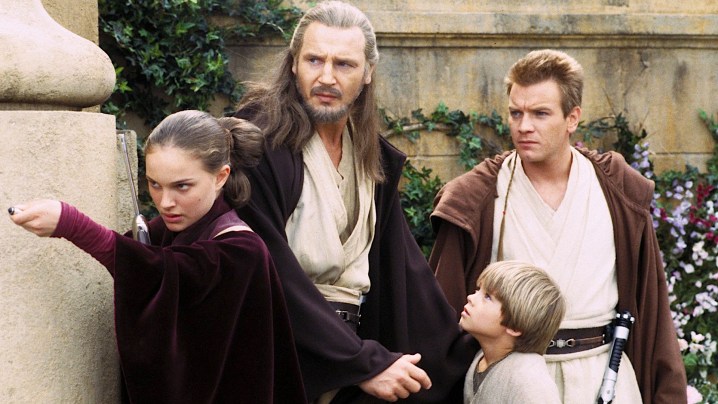
They’re not good; we just have selective memories
I mean, come on, have you seen these things? I won’t relitigate all the carping from the last 23 years, but let’s review some key complaints.
- The acting is wooden bordering on amateurish. How do you siphon Samuel L. Jackson (as Jedi Mace Windu) of all charisma? Would anyone watching these films believe Natalie Portman as Queen Amidala would win an Oscar five years later for Black Swan?
- Representation is famously problematic. Jar Jar Binks, the slave owner Watto, and the Trade Federation aliens are rendered as racial stereotypes, if unconsciously.
- The storytelling is glacial for long stretches.
- Dialogue is on the nose and often cringeworthy. “My powers have doubled since the last time we met, Count,” Anakin (Hayden Christensen) boasts to Count Dooku. A lot of the character names are dumb too.
- The movies are often goofy as hell, due especially to all Jar Jar-related material, Jake Lloyd’s moppet of a little Skywalker squealing “yippee,” the ’50’s-style diner Obi Wan (Ewan McGregor) visits in Attack of the Clones to get information from a fry cook that we’re supposed to believe is an old friend, and much, much more.
None of this has aged well, let alone improved, especially in The Phantom Menace. But fans still extol the great parts: Darth Maul (Ray Park) and his double bladed lightsaber; the thrilling duel between Obi-Wan, Qui-Gon Jinn (Liam Neeson), and Maul, still among the best; John Williams’ terrific score, especially the classic “Duel of the Fates” theme. It’s human nature to want to remember the good stuff and so we do. It’s why people say nice things about jerks at their funerals.
The prequel generation has come of age
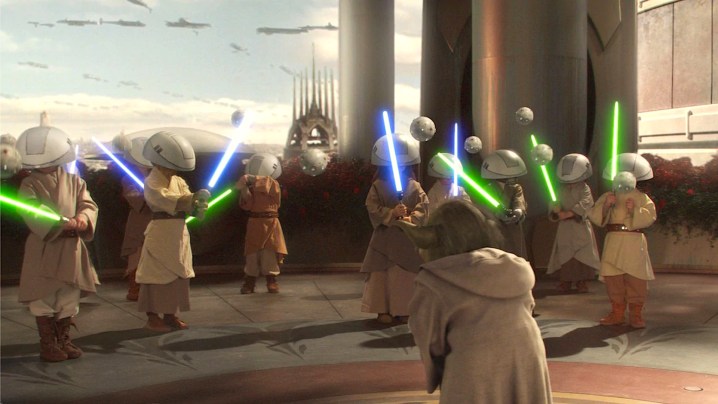
As I wrote in another article, Generation X has become very proprietary over Star Wars – claiming to understand its true nature and what future installments should contain. These fans who grew up on the original trilogy took issue – loudly – with the prequels, for the issues described above, but also simply because they weren’t the originals. In doing so, they often neglected to consider what Lucas has said publicly and often: Star Wars is for kids. Ten-year-olds in 1983 weren’t rolling their eyes at the goofy content in Return of the Jedi – the Ewoks, the mélange of rubber puppets in Jabba’s Palace, which somehow became even stupider in the late-’90s Special Editions. We know it’s all cringe-inducing now. And yet, despite that, Xers still defend the original trilogy in all its flaws.
Millennials and even some Gen Zers have always felt the same defensive love for the prequels. It’s just that now they are old enough and organized enough in fan communities to articulate their appreciation. Obi-Wan Kenobi never would have been made — or become the biggest premiere yet on Disney+ — without that dedicated fan love, something Ewan McGregor gratefully acknowledged. Nine combined seasons and counting of the critically acclaimed The Clone Wars and The Bad Batch would never have been made either.
They seem better through the additional canon-building
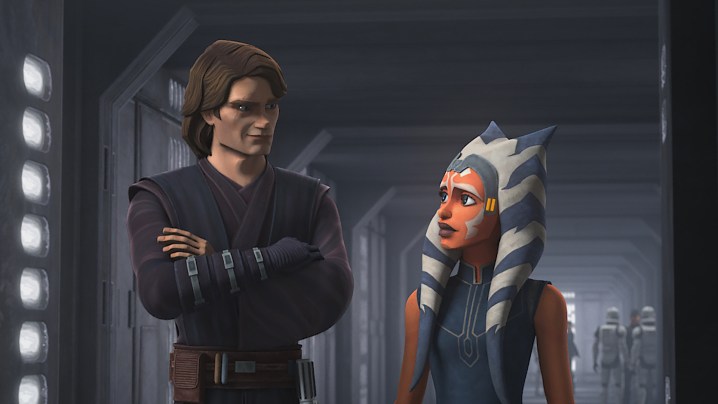
Speaking of which, The Clone Wars, The Bad Batch, Visions, Rebels, The Mandalorian, and a plethora of video games, comic books, and novels have all fleshed out and expanded the prequel narratives. Darth Maul is an example of a prequel character who went on to, ahem, menace good guys in everything from the animated shows to Ron Howard’s Solo, which set up Maul to be a major character in a sequel that never came. Dave Filoni’s The Clone Wars animated series has been the jewel of this extra-textual material, consistently earning raves for its lush animation along with its willingness to explore themes in a grown-up way for animation.
The profusion of auxiliary material deepened the characters, gave them interesting new arcs, developed the already rich story world, and in general made everything seem more interesting and well-rounded. Over time, our brains have lumped the acclaimed material in with the subpar material. Fan love for The Clone Wars and Rebels has increased our appreciation of the prequels, probably without us even realizing it. A rising tide lifts all boats.
They’re superior compared to new Star Wars stuff

Did anyone ever think that a Star Wars feature film could be worse than The Phantom Menace? Welcome to The Rise of Skywalker. I would sit through a double feature of the mid-’80s made-for-TV Ewok movies, Caravan of Courage and The Battle of Endor, with an appetizer of the Star Wars Holiday Special — perhaps the most maligned cultural artifact of our time — before enduring The Rise of Skywalker again, which lumbers towards yet another protracted climax featuring a big ol’ space battle and a good-versus-bad Jedi showdown, except staged in the most incoherent and meaningless way possible.
Then there is The Book of Boba Fett, which is about, well … no one can say exactly. But if you squint at your TV while passing through your living room, it looks something like Star Wars. The first season of The Mandalorian is also, let’s face it, pretty tedious. Very little happens while the galaxy’s dullest man tours random planets with a Muppet baby in tow.
My point is, in the face of some of this dreck, how could the prequels not look better? They’re epic, they’re ambitious, they’re beautifully photographed, they contain lots of thrilling action sequences — inventively staged and shot by Lucas and Steven Spielberg — and they have a narrative throughl ine that, while it could be better structured, at least climaxes in a purposeful and meaningful way.
Attitudes toward art and culture change over time
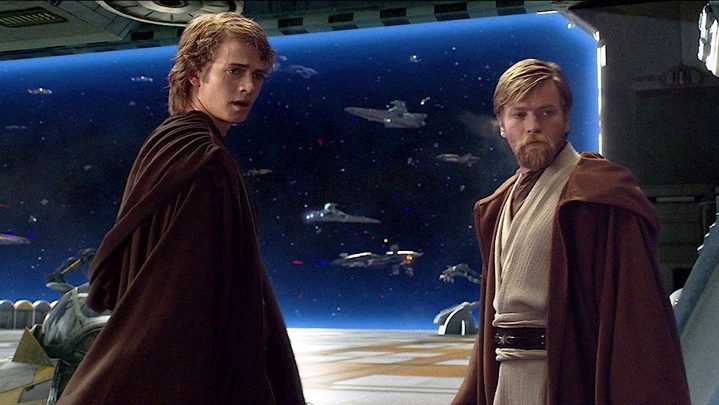
Revenge of the Sith is flawed, but it’s a visually stunning film, teeming with the passion and darkness that The Phantom Menace altogether lacks. Of the three prequels, it’s the only one I liked before writing this article. As such, I was not looking forward to refreshing myself on Attack of the Clones, a movie which often ranks near the bottom of lists of Star Wars movies.
Still, I’ve always admired the opening, when Senator Amidala’s ship floats into the upper atmosphere of the Republic planet of Coruscant like one of those gleaming, chrome, early-model Pan Am jetliners, then glides over the tips of Art Deco-esque skyscrapers sprouting through pearly clouds like some ancient civilization long submerged by an alien ocean. The engines thrum like an old prop plane (Lucas reminding us that Star Wars has its roots in the roar and buzz of World War II dogfights) and the ship alights on a landing pad floating in the mist. The peace holds for a moment, then is ripped asunder as a thunderous explosion blisters orange and black across the screen, sending bodies and pieces of ship hurtling. It’s a shocking moment and I thought nothing else in the film matched its savage eloquence.
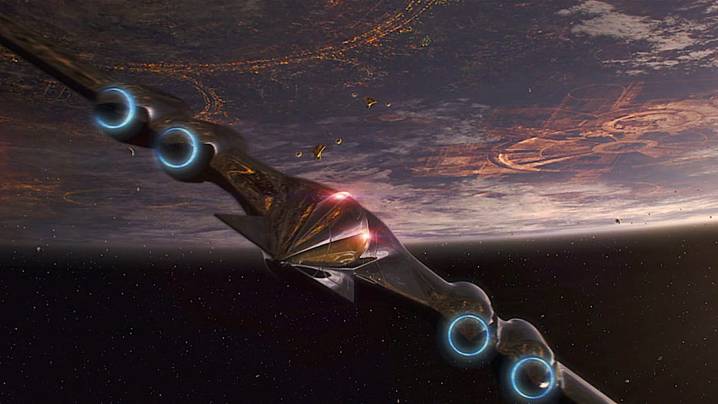
Yet, as I watched, I kept waiting to roll my eyes, to be bored, to be embarrassed for Lucas and his worst impulses, and instead found myself enjoying it. Obi-wan and Anakin’s night chase through Coruscant skyscrapers ranks among Lucas’ best-realized action sequences. Yes, the design owes a lot to Blade Runner (at this point, what doesn’t?), but Lucas masterfully controls editing and cinematography to create the illusion of dizzying depths. There are other brilliant sequences as well, including one in which Anakin and Padme stumble through a massive robot assembly line in a sci-fi homage to Chaplin’s Modern Times.
But the most gobsmacking revelation hit as I contemplated the long-ridiculed romantic dross between Anakin and Padme. Wait a minute, I finally grasped as it unspooled … this cringe-inducing stuff is supposed to be cringe-inducing!! Especially post-#MeToo, it’s incredible to realize what a creep he is, openly admitting that he obsesses over her, when he’s supposed to be in her employ (paging Jedi HR). “You’re making me feel uncomfortable,” she says, when Anakin looks deep into her eyes with lecherous intent. Anakin is, for lack of a better word, icky. When a mere few scenes later, Padme can’t resist his advances, she hasn’t suddenly fallen for his charm — he’s manipulating her with the Force. I’m not the first person to have this revelation, but I think it’s fair to say, people have been slow to catch on. I sure was.
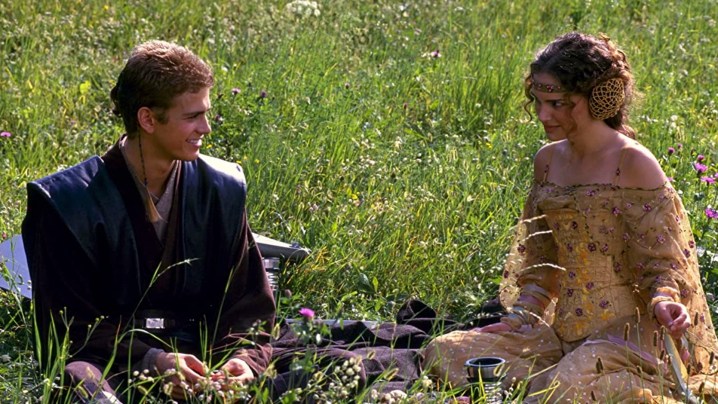
In fact, most of Padme’s decisions in this movie only make sense in terms of her brainwashing. Why does she let Anakin kiss her so soon after rejecting him? Why does she sit with him by the fireside in revealing clothing even as she’s clearly trying to resist him? Why would she marry him?? Again, she’s not falling in love — he’s controlling her. Why else would she ever leave the safety of home after multiple assassination attempts to accompany him on a dangerous rescue mission on another planet, then comfort him when that mission devolves into his vengeful genocide? It’s why she later proclaims her love to him in the most insipid, romance-novel terms. Not because these are her sentiments, but because, in Anakin’s shallow and inexperienced fantasies, this is what love sounds like to him. It’s not an accident that these moments occur when they are alone, away from outside influences.
Similar to how we read this in an era more sensitive to harassment, gaslighting, and abuse (all of which becomes more pronounced in Revenge of the Sith), younger generations — who discuss, accept, and self-diagnose mental illness more openly — are more likely to read Anakin’s behavior as narcissism or borderline personality. These readings make the prequels so much better because they make Anakin so much worse. He’s not a hero who goes bad. He’s a narcissist from the word go. People only exist in terms of what they can do for him – clearly a Vader-ian trait. Even at his mother’s funeral, he focuses on his own failures and how he won’t fail again. Padme — this talented, caring, dedicated leader — becomes just another of his victims. Lucas emphasizes this tragedy with a final close-up in which she takes his robot hand, affirming she hasn’t married a man, but a monster.
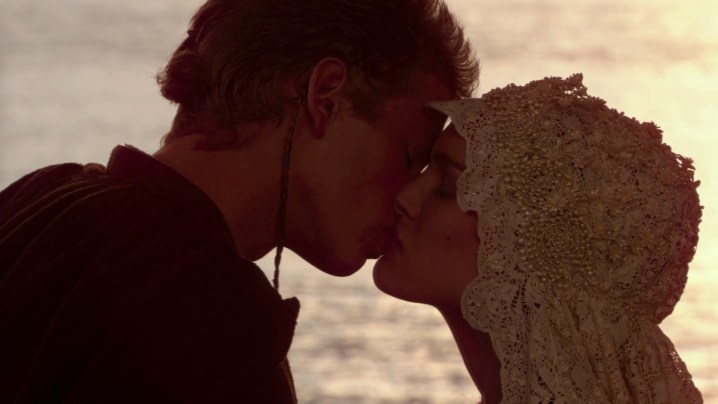
Our responses to art change through new cultural lenses. Something once beloved comes to be seen as hopelessly dated, whereas something once reviled is now visionary, or at least seen as misunderstood. Perhaps the prequels, and Attack of the Clones especially, are undergoing such a cultural reevaluation. Or perhaps the renewed appreciation for the prequels is due to another of the reasons I suggest above (or all of them). Our selective memories, generational shifts, and new material — either prequel-related or otherwise — has made them look better in different contexts. Of course, one final possibility is that maybe they were always “good” — especially Revenge of the Sith, and less evidently, Attack of the Clones — and plenty of people liked them just fine all along. Well … mostly anyway. The Phantom Menace is still largely indefensible.
You can view most Star Wars-related content on Disney+. Sadly, the Star Wars Holiday Special is still not on that streaming service.
Editors' Recommendations
- Disney+ reveals the first trailer for Star Wars: Tales of the Empire
- Did Andor ruin Ahsoka, and maybe the entire Star Wars franchise, by being too good?
- Darth Vader vs. Kylo Ren: which one is the better Star Wars villain?
- Want to enjoy the Star Wars TV shows more? Watch the cartoons, already!
- Spotify celebrates Star Wars Day with soundtracks and audio books




